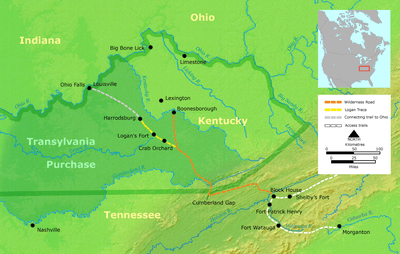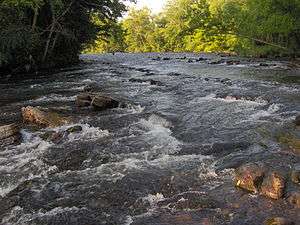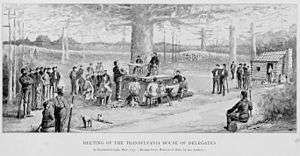Transylvania Colony

The Transylvania Colony was a short-lived, extra-legal colony founded during 1775 by land speculator Richard Henderson, who controlled the North Carolina based Transylvania Company. Henderson and his investors had reached an agreement to purchase a vast tract of Cherokee lands west of the southern and central Appalachian Mountains through the acceptance of Treaty of Sycamore Shoals with most leading Cherokee chieftains then controlling these lands. To further complicate matters, this early American frontier land was also claimed at the same time by both the Province of Virginia (particularly following Lord Dunmore's War) and the North Carolina colony.
The Transylvania Colony was primarily located in what is now the central and eastern parts of Kentucky. The American pioneer and frontier explorer Daniel Boone was hired by Henderson to establish the Wilderness Road going through the Cumberland Gap and into southeastern Kentucky. Transylvania officially ceased to exist as a government entity in 1776 when the Virginia General Assembly invalidated the Transylvania Purchase.
Background
In the 1768 Treaty of Fort Stanwix, the Iroquois ceded their claims on lands south of the Ohio River to the Kingdom of Great Britain. Although they claimed sovereignty over much of what is now Kentucky, the Iroquois did not actually reside there, as did their nominal vassal, the Shawnee. In addition, the Cherokee to the south and east used much of the area as their historical hunting grounds. Neither of these peoples had been consulted regarding the Stanwix treaty, although a series of borders was worked out with the Cherokee at the Treaty of Hard Labour (1768), the Treaty of Lochaber (1770), and once more in 1771 when they agreed to extend the Lochaber cession into present-day northeast Kentucky. The Shawnee, however, had not conducted a boundary agreement with the colonies since 1758 at the Treaty of Easton, giving them a claim to everything west of the Alleghenies. Consequently, they began to attack frontier settlers moving into the region. This led to Lord Dunmore's War, fought in 1774, primarily between the Shawnee and the Province of Virginia. The Shawnee lost this brief war and their chief Cornstalk ceded all their claims south of the Ohio River, including Kentucky.
Also, through much of the first half of the 18th century, a state of war had existed between the "northern tribes" (particularly the Iroquois, and the Lenape and Shawnee who were then tributary to them) and the "southern tribes", to the detriment of the Cherokee and Catawba, with no real buffer in the hunting grounds that separated them.
The Transylvania Company

On 27 August 1774, Richard Henderson, a judge from North Carolina,[1] organized a land speculation company with a number of other prominent North Carolinians. Originally called Richard Henderson and Company, the company name was first changed to the Louisa Company, and finally to the Transylvania Company on January 6, 1775. The Transylvania Company investors hoped to establish a British proprietary colony by purchasing the Kentucky lands from the Cherokee who had earlier settled much of the south and southeastern Kentucky areas and still claimed hunting rights in the abandoned Shawnee lands.
Treaty of Sycamore Shoals
In March 1775, Richard Henderson and Daniel Boone met with more than 1,200 Cherokee at Sycamore Shoals (present day Elizabethton in northeastern Tennessee). Present were Cherokee leaders such as Attakullakulla and Oconostota. With the Treaty of Sycamore Shoals, Henderson purchased all the land lying between the Cumberland River, the Cumberland Mountains, and the Kentucky River, and situated south of the Ohio River on March 14, 1775. The land thus delineated, 20 million acres (81,000 km²), encompassed an area half the size of present-day Kentucky.
Henderson and his partners probably believed that a recent British legal opinion, the Camden-Yorke opinion, had made such purchases legal. In fact, the Transylvania Company's purchase was in violation of both Virginia and North Carolina law, as well as the Royal Proclamation of 1763, which prohibited private purchase of American Indian land and the establishment of any non-Crown sanctioned colony.
Settlement


Prior to the signing of the Sycamore Shoals Treaty, Henderson had hired Daniel Boone,[1] an experienced hunter, to travel to the Cherokee towns and to inform them of the upcoming negotiations. Boone had been in southeast Kentucky long before the founding of any Kentucky settlements.[2] Afterward, Boone was hired to blaze what became known as the Wilderness Road, which went from Virginia through the Cumberland Gap and into central Kentucky. During this trail-blazing expedition, Boone and his party suffered several Indian attacks. Along with a party of about thirty workers, Boone marked a path to the Kentucky River, where he established Boonesborough (near present-day Lexington, Kentucky), which was intended to be the capital of Transylvania. Unknown to Boone, Henderson led another expedition following in Boone's tracks, widening the path so travellers could bring through wagons. In addition to Boonesborough, other settlements, notably Harrodsburg, were established at this time. Many of these settlers had come to Kentucky on their own initiative, and some of them refused to recognize Transylvania's authority.
When Henderson arrived at Boonesborough fewer than a hundred people resided there. This population and a few other settlements in the area constituted the sparse concentration of white settlers in the isolated western wilderness. The settlers recognized their precarious situation. They not only faced significant Indian hostilities, but lacked adequate supplies and shelter. Notwithstanding these circumstances, Henderson urged settlers in the area to hold a constitutional convention.
Henderson's plan involved the various settlements scattered across Transylvania sending delegates to Boonesborough, acting in the name of the people they represented and whose consent would justify the convention. In May 1775, under the shade of a huge elm tree, a three-day convention met. In addition to passing nine bills dealing with immediate matters of governance, delegates drafted a compact that organized a frame of government, known as the Transylvania Compact. This plan included executive, legislative, and judicial branches.[3]
After concluding the compact, Henderson returned to North Carolina. On behalf of his fellow investors in the land scheme he petitioned the Continental Congress, seeking to make Transylvania a legally recognized colony. Despite those efforts, the Congress declined to act without the consent of Virginia and North Carolina, both of whom claimed jurisdiction over the region in question. In June 1776 the Virginia General Assembly prohibited the Transylvania Land Company from making any demands on settlers in the region. In December 1778, Virginia's Assembly finally declared the Transylvania claim void. In compensation, Henderson and his partners received a grant of 12 square miles (31 km²) on the Ohio River below the mouth of Green River.
Treaty disharmony
The Treaty of Sycamore Shoals was just one of several treaties that disenfranchised the Cherokee from their ancient lands in Upper Cherokee areas. Indian treaties were disavowed by some of the chiefs. A minor Cherokee chief, Dragging Canoe, refused to sign, endorse, or obey the Treaty of Sycamore Shoals, although his father, Attakullakulla, apparently did sign. Dragging Canoe left the Sycamore Shoals treaty grounds taking those who were loyal to him and his way of thinking into southeastern Kentucky,[4][5] to an area known as Cannatuckahoe because of the Cherokee Tuckahoe people settled in the area. A few years later, after the Treaty of Long Island, Dragging Canoe and his now considerably grown number of followers removed themselves further from the other Cherokee villages — as well as the Euro-American settlements — by following the Tennessee River further downstream into the remote area of the Chickamauga Creek (near modern-day Chattanooga). There, in 1777, they established eleven towns which remained hostile to the people of the newly united Colonies for decades. This location gave this group the name "Chickamauga" they were also known as the "Lower Cherokee."
See also
- Carter County, Tennessee
- Transylvania County, North Carolina
- Doe River
- Fort Watauga
- James Robertson
- Isaac Shelby, surveyor in Kentucky for the Transylvania Company
- "The Wataugans"
- Watauga River
- Transylvania University
- Cherokee–American wars
References
- 1 2 Sawyer, Susan (1 August 2002). It Happened in Tennessee. Guilford: Globe Pequot. pp. 1–3. ISBN 978-0-7627-1164-2. Retrieved 22 November 2011.
- ↑ Raised along the Yadkin River in North Carolina, Boone's early Cherokee connections are not well recorded, but he had used Cherokee guides at times.
- ↑ Christian G. Fritz, American Sovereigns: The People and America's Constitutional Tradition Before the Civil War (Cambridge University Press, 2008), p. 55-60 [ISBN 978-0-521-88188-3]
- ↑ Southeast Kentucky, and nearby areas, have proven Cherokee origin traditions with cave era links.
- ↑ Canoe, KY —in present day Breathitt County and part of early Perry County — is named for Dragging Canoe.
Further reading
- Abernethy, Thomas Perkins. Western Lands and the American Revolution. New York: Russell & Russell, 1959.
External links
- "Transylvania Purchase", entry from the Tennessee Encyclopedia of History and Culture